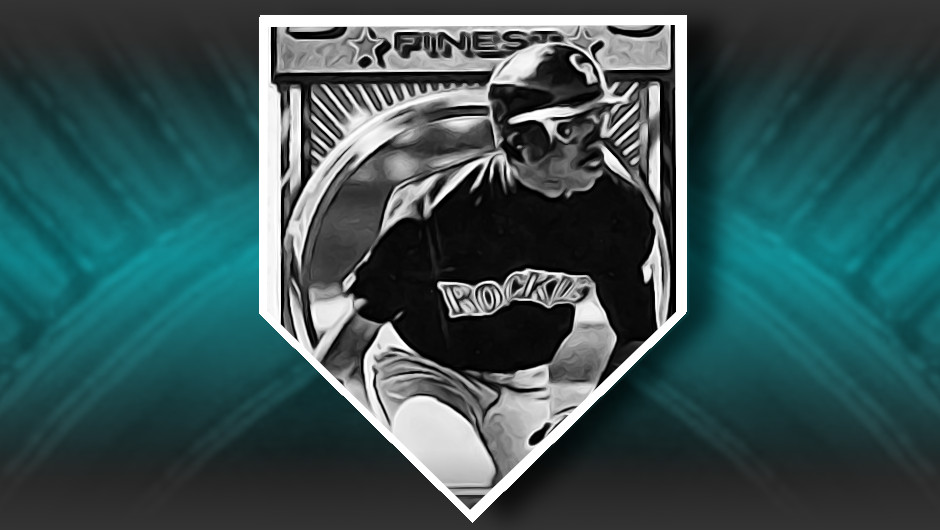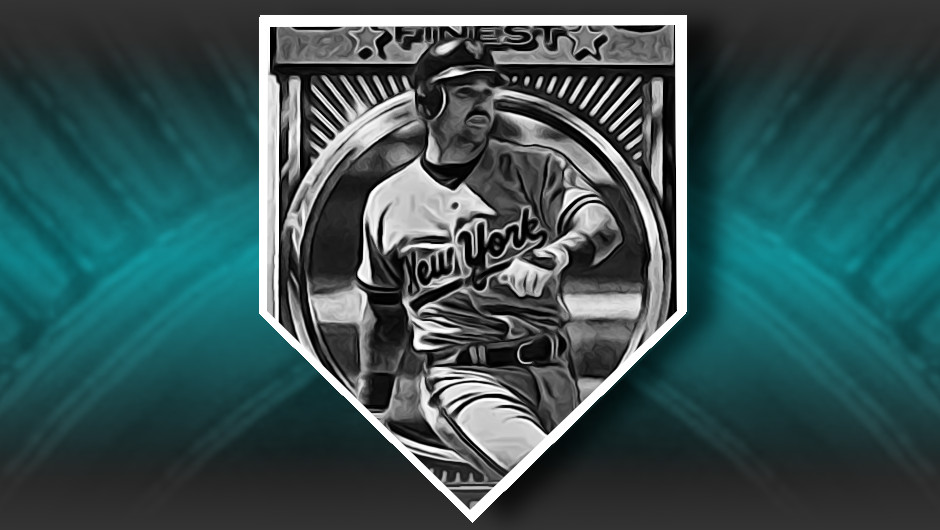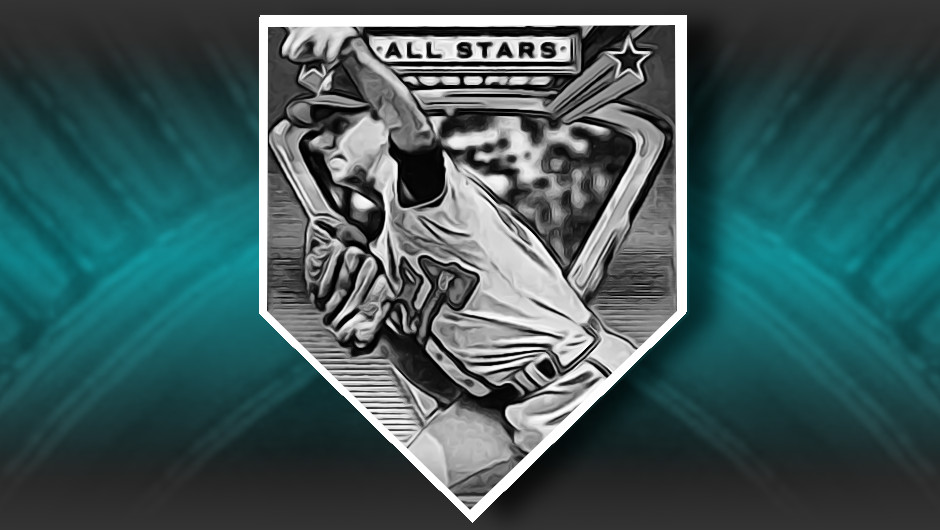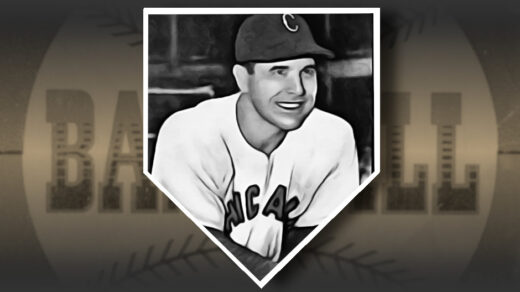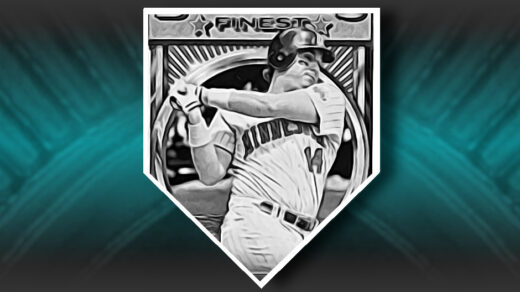It’s time to admit something: For someone who has dedicated so much mental space to the sport, I have not been to nearly enough baseball games. My lifetime total of games featuring major leaguers can be counted on one hand. The tally falls to just two contests if exhibition games against minor league affiliates are excluded.
My most recent ticket stub hails from 14 years ago. I snapped this picture while seated along the first base line for a weeknight game in Chicago. Adam Dunn is blowing perhaps his 2,310th bubble of the season while another familiar name begins to take his lead after getting his 2,310th MLB hit (#3,587 including NPB stats).
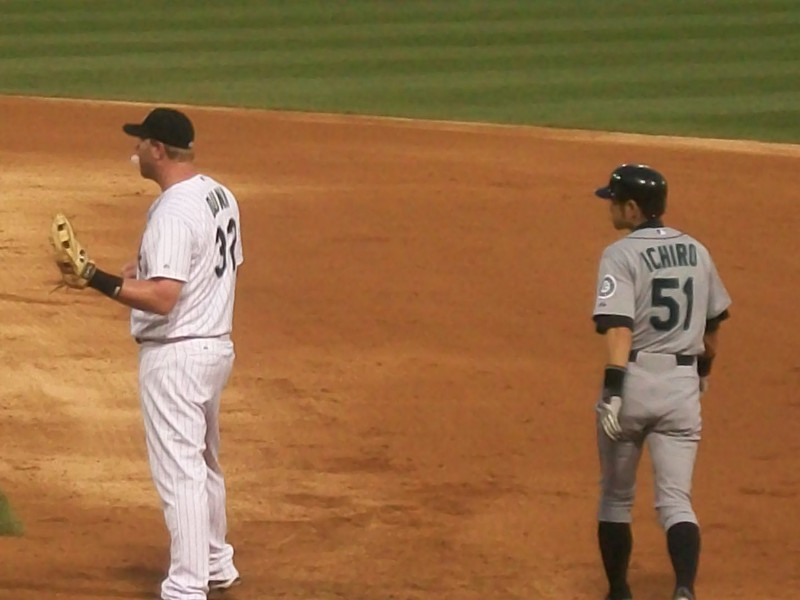
While my sample size is rather limited, I find myself in agreement with the idea that you never forget your first big league game. I traveled to RFK Stadium in DC in early 2007 to see the New York Mets take on the Washington Nationals. What I witnessed was a 4 hour pitching duel that finally broke open in the 12th inning.
I saw more people in Mets caps than those of the home team, which was to be expected for the Nationals of that era. The Mets, after all, had the players I wanted to see. Moises Alou and Shawn Green were in the outfield. A pair of powerful hitters named Carlos, of the Delgado and Beltran variety, were in the lineup. Local guy turned All-Star David Wright was holding down third base and Jose Reyes was in the process of stealing 78 bases, the highwater mark for the present century and a total not eclipsed since Rickey Henderson in 1988 . Julio Franco was even with the team and would play a key role in extra innings.
The player I was most excited to see was Tom Glavine, the Mets’ starting pitcher. He had 294 wins going into that night’s game alongside 2,497 career strikeouts, so the chances were pretty good of seeing him notch a milestone number. On top of this, Glavine was one of those aging players that I wanted to see before the end of his career. He had played a key role in the pitching dominance of the Atlanta Braves in the ’90s, a period when he teamed up with John Smoltz and Greg Maddux to take home 7 of 8 consecutive Cy Young Awards.
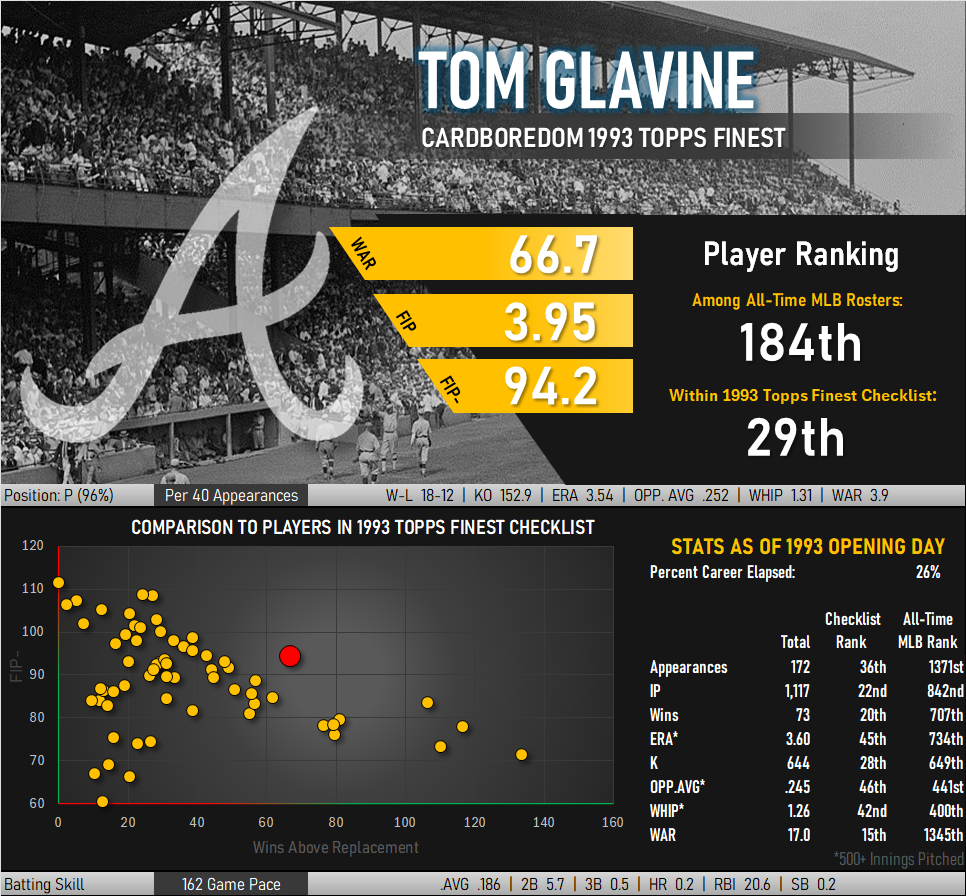
Glavine was one of the more reliable pitchers of all time. He pitched for more than two decades, starting almost every game in which he appeared and accumulating more than 4,000 innings. A typical Glavine outing saw the pitcher last 6½ innings, a bit more than last season’s innings-eating king Logan Gilbert. He rarely missed a start, and when he did get hurt he would bounce back to his old form with no lingering effects.
He was the starter of 685 of his 685 career pitching appearances, but that only accounts for 96% of his games. Glavine had a reputation as a capable hitter and the rest of his appearances came as a pinch hitter. That reputation led to a succession of batting-related hardware, notably four silver slugger awards (one more than Ichiro’s total).
Shiny Bats
Glavine was generally considered one of the game’s better hitting pitchers, getting the Silver Slugger nod on multiple occasions. In addition to beating Ichiro’s total, he logged more silver hardware than the likes of Jeff Bagwell, Darryl Strawberry, Mark McGwire, Jason Giambi, Larry Walker, or Chipper Jones.
He must have been an offensive monster, right?
| Career | PA | H | .AVG | .SLG | .OBP | OPS+ | TB | HR | RBI |
|---|---|---|---|---|---|---|---|---|---|
| Glavine | 1,645 | 246 | .186 | .210 | .244 | .454 | 278 | 1 | 93 |
Ehhh…..not quite. Then again, the Silver Slugger award is a bit of an oddity itself. While it is generally considered a legit award, it comes from an equipment manufacturer hoping to sell more bats. From my view sitting in the world of collecting cardboard, it’s as if Major League Baseball bestowed some sort of official award status to getting your picture on a Diamond Kings card. A sign of genuine respect? Yes. Something that takes skill to unlock? Absolutely. A bit weird when you step back and look at it? Yep.
The Silver Slugger (officially the Hillerich & Bradsby Silver Slugger Award) is presented by the maker of Louisville Slugger baseball bats to a representative of each position for both the American and National Leagues. The award debuted in 1980 and has been going strong ever since. Voting for the award takes place at the end of each season with eligibility restricted solely to managers and coaches. Voters can cast ballots for any name with the exception of those on their own team. Votes need to be cast for each position on the diamond, though pitchers were removed from ballots in 2022.
Players were initially intended to be judged on their capabilities in the triple crown categories (HR/RBI/.AVG), though at some point the judging criteria shifted to .AVG/.SLG/.OBP and “general impressions of a player’s overall offensive value” (for times when the math doesn’t math).
Looking at the voting criteria and list of winners, I don’t think the voters took their sacred duty of baseball citizenship too seriously. Fernando Valenzuela, for example, backed up his second silver bat in 1983 with underlying triple crown stats of .187/1 HR /9 RBI. The Padres’ Tim Lollar batted 54 points higher with more RBIs on top of also hitting a home run, firmly putting him ahead of the Dodgers’ pitcher in terms of the official selection criteria.
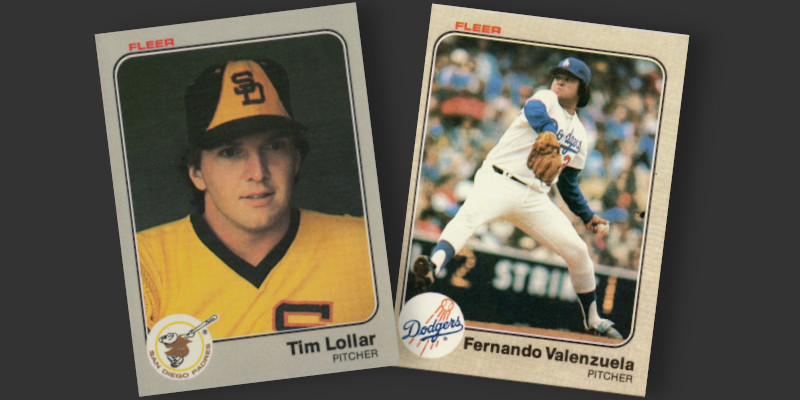
I have a theory about what drove voting for Silver Slugger pitcher awards: apathy. Pitchers were not the first names that came to mind when filling out a ballot for the game’s most potent offensive forces. Initially an “award” from a workplace vendor, there probably wasn’t a lot of homework put into identifying which pitcher had a truly standout season at the plate. Still, the folks making bats would probably follow up with a call (and long winded sales pitch) if the pitching spot were left blank. I think the voters simply defaulted to the best hitting pitcher currently on TV at the time they put their ballots in the mail. Who was this likely to be after the season ended? Whichever pitcher was deep into the playoffs. Valenzuela was busy fighting the Philadelphia Phillies for a World Series spot in 1983 while Lollar and his 81-81 Padres were watching the game on television.
***Tom Glavine and the 1990s Atlanta Braves have entered the chat***
Tom Glavine won four Silver Slugger awards from 1991-1998. It’s probably not a coincidence that his Atlanta Braves went to the NLCS in almost every one of those years. In fact, the Braves went to the World Series in 1991, 1995, and 1996, seasons in which he won his first three awards. The fourth would come when the Braves lost the NLCS to the Padres (while Glavine took home the NL Cy Young Award). Rather than look up his stats, it seems voters simply looked to the guy getting the job done for Atlanta.
ANNUAL AVERAGE SEASON TOTALS
| NAME | PA | HR | RBI | .AVG | .SLG | .OBP | .OPS |
|---|---|---|---|---|---|---|---|
| Glavine (Average of Silver Slugger Years) | 87.8 | 0.3 | 6.0 | .246 | .289 | .284 | .573 |
| Average Silver Slugger Winning Pitcher | 78.5 | 1.7 | 8.7 | .265 | .395 | .293 | .688 |
| All 1980s Pitchers* | 73.7 | 0.3 | 3.9 | .149 | .188 | .182 | .370 |
| All 1990s Pitchers* | 70.3 | 0.2 | 3.5 | .151 | .189 | .186 | .374 |
| All 2000s Pitchers* | 66.9 | 0.3 | 3.4 | .146 | .191 | .180 | .370 |
*Only pitchers with at least 50 plate appearances in any given year.
Looking at the table above, it is clear that Glavine was a better at the plate than your typical pitcher. His numbers regress when compared only to other Silver Slugger pitchers. I went back and looked at the performance of other pitchers at the plate and compared their results to Glavine’s award winning seasons. Tommy Greene had a better 1991 than Glavine. Kevin Foster had better numbers in 1995. The following year was more of a tossup between Glavine, Jason Isringhausen, and Steve Avery while Steve Traschel may have had a better case in 1998.
Still, if you had asked me before this who was the best hitting pitcher in the 1990s, I probably would have guessed Tom Glavine or Mike Hampton. Considering those two took home a combined 9 Silver Slugger awards, I think the award largely captured what it intended.
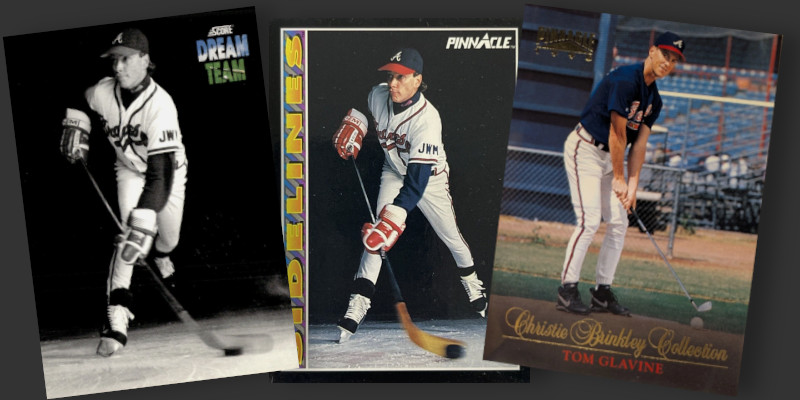
Shiny Cards
It’s not just silver bats that are shiny. Glavine’s refractor turns out to be one of the more sought after shiny cards from 1993 Finest. For years this one appeared in Beckett with the dreaded SP asterisk next to it. The data I have collected shows the card to been in the bottom 20% or so in terms of availability within the checklist. More importantly, Glavine appears to be one of the most condition sensitive names in the set, often appearing with centering issues. My personal copy of the card definitely exhibits this tendency to have one border wider than the other.
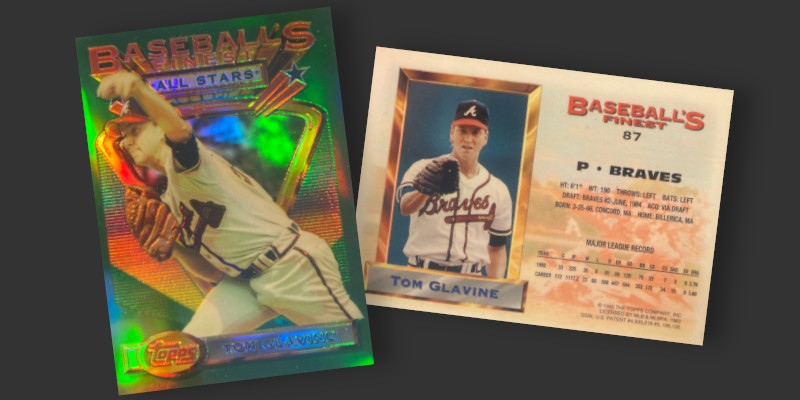
At one point I was optimistic about finding cards like this at big card shows. I traveled hours to Northern Virginia to attend the Chantilly show and found very little in the way of refractors on the show floor. I did, however, spend time talking to some dealers about their own experiences with these cards. One guy said he knew another dealer who had a Glavine refractor and texted him about its availability on the spot. He did indeed have one, but in true Chantilly show fashion shot back a price more than double what I had last seen one go for. Today that texting dealer is at The National and I’m at home (along with a shiny Glavine card purchased somewhere else 2 years later). I guess it all worked out.
Fun fact: Also playing in that 2007 Mets/Nationals game was first baseman Dmitri Young. While he put together a decent MLB career, he is perhaps better known in card collecting circles as having assembled one of the best collections of Gem Mint Hall of Fame rookie baseball cards.


